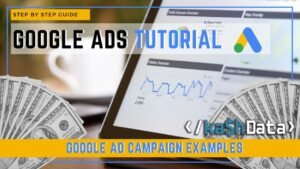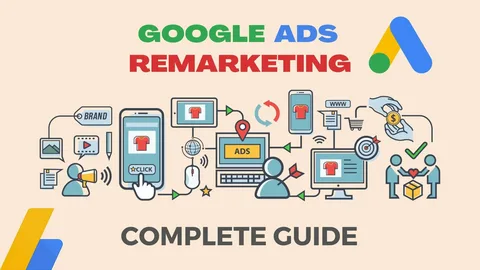Introduction:
Remarketing with Google Ads is a powerful strategy for startups to re-engage potential customers who have previously interacted with their website or app. For startups with limited budgets and high growth ambitions, remarketing can maximize ROI by targeting users already familiar with the brand, increasing conversions, and boosting brand recall. However, many startups struggle to implement remarketing effectively due to a lack of strategy, technical know-how, or optimization. This guide breaks down the problem, identifies causes and consequences, and provides actionable steps, real-world examples, and preventive tips to help startups succeed with Google Ads remarketing.
Breaking Down the Problem: Components of Ineffective Remarketing.
Remarketing campaigns can fail to deliver results for startups due to several interconnected issues. Let’s break them down:
- Improper Setup and Tracking
- Lack of proper remarketing tags or audience segmentation leads to missed opportunities or irrelevant ad targeting.
- Poor Audience Segmentation
- Treating all website visitors the same, ignoring their specific behaviors (e.g., cart abandoners vs. homepage visitors).
- Weak Ad Creat_constructive
- Generic or uninspiring ads that fail to entice users to return and convert.
- Budget Mismanagement
- Overspending on low-value audiences or underfunding high-potential campaigns.
- Lack of Optimization
- Failing to monitor performance or adjust campaigns based on data, leading to wasted ad spend.
Common Causes.
Several factors contribute to these remarketing challenges for startups:
- Limited Technical Expertise: Startups may lack in-house knowledge to set up Google Ads tags or integrate with Google Analytics.
- Resource Constraints: Small teams prioritize product development over marketing, leading to “set it and forget it” campaigns.
- Misunderstanding User Intent: Not analyzing user behavior to create tailored ads for different audience segments.
- Overreliance on Automation: Using Google’s default settings without customizing for startup-specific goals.
- Neglecting Testing: Failing to A/B test ads or experiment with bidding strategies due to time or budget limitations.
Consequences of Not Addressing the Issue.
Ignoring these remarketing challenges can have significant repercussions for startups:
- Wasted Budget: Ineffective campaigns drain limited marketing funds without delivering conversions.
- Lost Opportunities: Failing to re-engage interested users means missed sales or leads, stunting growth.
- Brand Fatigue: Overexposing users to irrelevant ads can annoy them, harming brand perception.
- Competitive Disadvantage: Competitors with optimized remarketing strategies capture your potential customers.
- Low ROI: Without conversions, startups struggle to justify ad spend, limiting scalability.
Actionable Step-by-Step Solution.

Here’s a comprehensive, startup-friendly guide to setting up and optimizing Google Ads remarketing campaigns:
Step 1: Set Up Remarketing Tags and Tracking.
- Why: To track user behavior and build remarketing audiences, you need proper tagging.
- How:
- Access Google Ads: Log into your Google Ads account and navigate to “Tools & Settings” > “Audience Manager.”
- Create a Remarketing Tag: Go to “Audience Sources” and set up a Google Ads tag or link Google Analytics (GA4 recommended).
- Install the Tag: Place the tag across all website pages using Google Tag Manager (GTM) or directly in your site’s code. For startups using platforms like Shopify, use built-in integrations.
- Verify Tag: Use Google Tag Assistant to ensure the tag fires correctly.
- Tools/Resources: Google Tag Manager, Google Analytics 4, Google Tag Assistant.
- Tip: If technical setup is daunting, hire a freelancer from platforms like Upwork for a one-time setup (~$50-$200).
Step 2: Build Targeted Audience Segments.
- Why: Different users have different intents, so segmenting ensures relevant ad delivery.
- How:
- Define Audiences: In Google Ads Audience Manager, create segments like.
- All Visitors: Users who visited any page (30-day default).
- Cart Abandoners: Users who added items to the cart but didn’t purchase.
- Product Page Visitors: Users who viewed specific products/services.
- Converted Users: Exclude these to avoid wasting budget.
- Set Membership Duration: Use 30-90 days for most startups, but test longer durations (e.g., 180 days) for high-value products.
- Use Dynamic Remarketing: For eCommerce startups, enable dynamic remarketing to show ads with specific products users viewed.
- Define Audiences: In Google Ads Audience Manager, create segments like.
- Tools/Resources: Google Analytics for behavior insights, Google Ads Audience Manager.
- Tip: Start with 2-3 segments to keep it manageable, e.g., “All Visitors” and “Cart Abandoners.”
Step 3: Craft Compelling Ads.
- Why: Engaging ads with strong CTAs drive users back to your site.
- How:
- Design Display Ads: Use tools like Canva to create visually appealing banners (e.g., 300×250, 728×90 pixels).
- Write Persuasive Copy: Include:
- Value Proposition: Highlight discounts, free trials, or unique features.
- Urgency: Use phrases like “Limited Time Offer” or “Shop Now.”
- Clear CTA: E.g., “Complete Your Purchase” or “Claim Your Discount.”
- Dynamic Ads for eCommerce: Upload a product feed in Google Merchant Center to show personalized product ads.
- Test Variations: Create 2-3 ad versions per audience to A/B test headlines, images, or CTAs.
- Tools/Resources: Canva, Google Merchant Center, Google Ads Responsive Display Ads.
- Tip: For startups with no design budget, use Google’s free responsive display ad templates.
Step 4: Optimize Bidding and Budget.
- Why: Smart budget allocation maximizes conversions within startup constraints.
- How:
- Choose a Bidding Strategy:
- Target CPA: Set a cost-per-action goal (e.g., $10 per lead) for predictable results.
- Maximize Conversions: Ideal for startups with flexible budgets.
- Manual CPC: Use for tight control, but requires more monitoring.
- Set a Budget: Start small (e.g., $5-$20/day) and allocate more to high-performing segments like cart abandoners.
- Use Frequency Capping: Limit ad impressions to 3-5 per user per day to avoid annoyance.
- Choose a Bidding Strategy:
- Tools/Resources: Google Ads Bidding Dashboard, Google Keyword Planner for cost estimates.
- Tip: Monitor campaigns weekly and shift budget to audiences/ads with the highest conversion rates.
Step 5: Monitor and Optimize Campaigns.
- Why: Continuous optimization ensures long-term success and prevents wasted spending.
- How:
- Track Metrics: Focus on:
- Click-Through Rate (CTR): Aim for 0.5-2% for display ads.
- Conversion Rate: Compare across segments.
- Cost Per Conversion: Ensure it aligns with your CPA goal.
- Review Placements: In Google Ads, check “Where Ads Showed” and exclude low-value sites (e.g., mobile games).
- Refine Audiences: Remove underperforming segments or adjust membership duration.
- Test New Creatives: Rotate ads every 2-4 weeks to prevent ad fatigue.
- Track Metrics: Focus on:
- Tools/Resources: Google Ads Reports, Google Analytics for deeper insights.
- Tip: Set up automated rules in Google Ads to pause low-performing ads (e.g., CTR < 0.2% after 1,000 impressions).
Real-World Examples and Case Studies…
- Case Study: eCommerce Startup (Fashion Retail)
- Problem: A clothing startup had high cart abandonment rates (70%) and low ad ROI.
- Solution: They implemented dynamic remarketing with a cart abandoner segment, showing ads with the exact items left in carts and a 10% discount CTA. They used Target CPA bidding and capped ad frequency at 4/day.
- Result: Within 3 months, cart recovery increased by 25%, and cost per conversion dropped by 30%.
- Source: Inspired by Google Ads case studies on retail remarketing.
- Example: SaaS Startup (Project Management Tool)
- Problem: A SaaS startup struggled to convert free trial sign-ups into paid users.
- Solution: They created a remarketing audience for users who signed up but didn’t upgrade within 7 days. Ads offered a 20% discount on the first paid month, with testimonials highlighting user success. They used RLSA (Remarketing Lists for Search Ads) to bid higher when these users searched for competitors.
- Result: Paid conversions rose by 15%, and remarketing ads had a 3x higher CTR than standard ads.
- Source: Based on SaaS marketing trends from 2024.
Prevention Tips for Future Success.
To avoid remarketing pitfalls, startups should:
- Invest in Training: Use free resources like Google Ads Skillshop to learn remarketing basics.
- Automate Where Possible: Use Smart Bidding to save time, but monitor results closely to avoid over-reliance.
- Segment Early: Build audience segments from day one to collect data, even if you’re not ready to launch campaigns.
- Test Incrementally: Avoid testing too many variables at once; focus on one element (e.g., ad copy) per test.
- Stay Updated: Follow Google Ads blogs or join communities like PPC Hero to keep up with 2025 trends (e.g., AI-driven remarketing).
Next Steps and Call to Action.
Startups can’t afford to miss out on remarketing’s potential to drive growth. Here’s what to do now:
- Audit Your Setup: Check if your Google Ads tag is installed and firing correctly (use Google Tag Assistant).
- Create One Audience: Start with a “Cart Abandoners” or “All Visitors” segment to test remarketing.
- Launch a Small Campaign: Allocate $50-$100 to a 2-week test with 2-3 ad variations.
- Analyze and Scale: After 2 weeks, review CTR and conversions, then double down on what works.
Call to Action: Don’t let potential customers slip away! Log into Google Ads today, set up your first remarketing campaign, and start re-engaging your audience. If you need help, explore Google’s free Skillshop training or consult a PPC expert to kickstart your success. Act now—your next conversion is waiting! This guide provides startups with a clear, actionable roadmap to leverage Google Ads remarketing effectively, balancing simplicity with strategic depth to suit resource-constrained teams.
